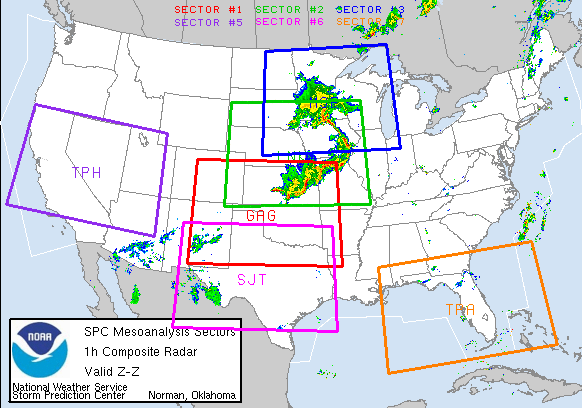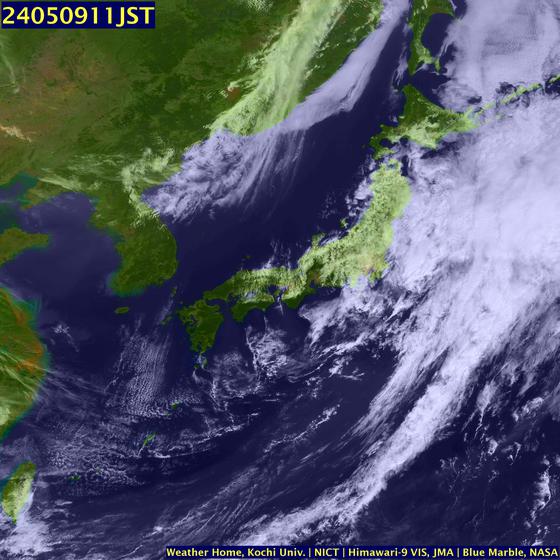 May 2008 Earthquake in China Could Be Followed by Another Significant Rupture
May 2008 Earthquake in China Could Be Followed by Another Significant RuptureResearchers analyzing the May 2008 Wenchuan earthquake in China's Sichuan province have found that geological stress has significantly increased on three major fault systems in the region.
The magnitude 7.9 quake on May 12 has brought several nearby faults closer to failure and could trigger another major earthquake in the region.
Geophysicists used computer models to calculate the changes in stress along the Xianshuihe, Kunlun, and Min Jiang faults-strike-slip faults like the San Andreas-which lie about 150 to 450 kilometers (90 to 280 miles) from the Longmen Shan rupture that caused the devastating quake. The research team also examined seismic activity in the region over the past decade.
They found that the May 12 event has doubled the probabilities of future earthquakes on these fault lines. Specifically, they estimated the probability of another earthquake of magnitude 6 or greater in the region is 57 to 71 percent over the next decade. There is an 8 to 12 percent chance of a quake larger than magnitude 7 in the next decade and 23-31 percent in the next 30 years.
The research team was led by Shinji Toda of the Geological Survey of Japan, and includes Jian Lin of the Woods Hole Oceanographic Institution (WHOI), Mustapha Meghraoui of the Institute of Geophysics in Strasbourg (France), and Ross Stein of the U.S. Geological Survey (USGS). Their findings were published September 9 in the online edition of the journal Geophysical Research Letters.
"One great earthquake seems to make the next one more likely, not less," said Stein, who has been collaborating with Lin and Toda for nearly two decades. "We tend to think of earthquakes as relieving stress on a fault. That may be true for the one that ruptured, but not for the adjacent faults."
In 1999, a 7.4 magnitude earthquake in Izmit, Turkey, was followed four months later by an M7.1 event in nearby Duzce. The devastating December 2004 Sumatra earthquake (M9.2) and tsunami were followed by an M8.7 quake three months later.
"Because the Tibetan Plateau is one of the most seismically active regions in the world, we believe there is credible evidence for a new major quake in this region," said Lin, a senior scientist in WHOI's Department of Geology and Geophysics. "The research community cannot forecast the timing of earthquakes, and there are still significant uncertainties in our models. But the Turkey and Sumatra events indicate that one major earthquake can indeed promote another.
Researchers see it as a domino-like effect, where the movement of one piece of Earth's crust means that another piece must move up, down, or away. While the stress in the crust gets reduced in some locations, it is transferred to other faults nearby.
Large aftershocks that occurred on August 1 and 5 in the Sichuan region of China may fit with this predicted pattern.
"Earthquake prediction is a bit like the thundercloud and lightning," Toda explained. "We can forecast that lightning will come from a thundercloud, but we cannot predict the exact time and place where the lightning will hit. With earthquakes, we can roughly forecast the probability of activity over broad ranges of time, magnitude, and location, but we cannot determine the exact value for any of these."
On May 12, 2008, about 300 kilometers of the Longmen Shan fault zone ruptured in an earthquake that killed at least 69,000 people and left another 5 million homeless. It was the deadliest and strongest earthquake to hit China since the 1976 Tangshan earthquake, which killed at least 240,000.
As pieces of the Longman Shan fault slipped by as much as nine meters (28 feet) in the May quake, stress increased along the neighboring Xianshuihe, Kunlun, and Min Jiang faults, according to Toda and colleagues. All three faults have a history of large quakes, though portions of each have been quiet for most of the past century. All three faults were considered to be primed for an earthquake even before the recent events.
In addition to the broad prediction of earthquake triggering, the researchers have also forecasted the rate and distribution of seismic shocks greater than magnitude 6, a prediction that they plan to test from seismic stations over the next decade.
"Our paper predicts the change in the rate of small earthquakes for the faults in the region, and now we can test that prediction," said Stein. "If the rate of shocks increases on the adjacent faults, then we can confirm at least part of our hypothesis that large shocks are also more likely. It may take time, but it is a testable hypothesis."
In western China, the intrusion of the Indian sub-continent pushes the Tibetan Plateau up and over the older Sichuan Basin and other parts of the Eurasian continent. An estimated 33 percent of world's continental earthquakes occur in China, even though it only occupies 7 percent of the planet's land mass. Nearly 55 percent of all human loss to earthquakes occurs in China.
"Earthquakes do not kill people, buildings do," said Lin, who was a high school student in China when the devastating Tangshan earthquake struck. "There needs to be widespread education in earthquake preparedness, as well as systematic inspection of buildings in these regions of heightened risk. Every new building inspection and evacuation plan could potentially save lives."
"We hope the long-term forecasting allows the Chinese government to make it a priority to mitigate future damage," Toda added. "We recommend that Chinese scientists carefully observe changes in seismicity by installing new seismometers in the region."
Lin, Toda, and Stein were preparing to teach an earthquake modeling course to Meghraoui's students and colleagues in France when the May 12 earthquake occurred. The researchers immediately went into action, working with an international group of scientists to analyze the new stresses on the system.
An early version of the manuscript by Toda et al was circulated to several dozen Chinese scientists and government officials as they sought to assess the risk of aftershocks in the weeks after the earthquake. Chinese government organizations and scientists are now examining the paper in detail.
"The recent quake reminded us that Earth scientists have a tremendous responsibility to work on issues of societal relevance," said Lin. "We don't want to create panic, but there is legitimate cause for concern and we have a major role to play in educating the public about what we know."
Funding for this research was provided by the Charles D. Hollister Endowed Fund for Support of Innovative Research at WHOI and the EOST-Institut de Physique du Globe de Strasbourg, France.
WEATHER NOTEPupils to help beaches be safer for summer
Intensive beach lifeguard courses are being held in Teignmouth this October half-term after the town's beaches were left short-staffed during the summer.
Teignbridge Council, which received fewer applications this year, hopes the RNLI will take over the running of the lifeguard service from them.
The courses will be run by the RNLI in partnership with Surf Life Saving GB who will teach prospective lifeguards from their local clubs across the south west.
Iain Palmer, president of Teignmouth Beach Surf Lifesaving Club, said the shortage was 'an on-going problem' but he hoped the latest drive to train lifeguards would ease it.
"We have not had a very good season weather-wise, but we have struggled to man beaches because of the shortage. It has been an on-going problem for the last two or three years," he explained.
He said there was a shortage of at least 300 lifeguards across the region in the summer months.
At the moment council lifeguards keep watch on Teignmouth and Dawlish Warren beaches.
Sparse numbers meant some beaches were only manned on weekends during the summer with swimmers relying on coloured flags to guide them.
The shortage meant there was no lifeguard on duty when 42-year-old holidaymaker Nigel Hunt, of Newport, Wales, died after getting into difficulties off waters at Teignmouth on July 24.
The 'no swimming' red flags had been flying because of choppy sea conditions and high winds earlier that day.
But Mr Palmer said he hoped the latest recruitment drive would boost numbers.
"It's a great chance for people to get their qualifications. We hope there are going to be 16 more qualified lifeguards by next summer," he said.
At the moment council lifeguards patrol Teignmouth and Dawlish Warren and the clubs assist on a voluntary basis.
Mr Palmer said he understood the council has been in talks with the RNLI who are going to patrol the beaches from next season.
A Teignbridge Council spokesman confirmed: "There has been a regional shortage of qualified lifeguards, and in Teignbridge we received fewer applications than usual for the posts this year.
"We welcome any initiatives which help train new lifeguards, and hope there are more qualified lifeguards available next year.
"We have been working closely with the RNLI since last year to arrange for them to run Teignbridge's lifeguard service from next season, a move which will also help bring more lifeguards to Teignbridge's beaches and resorts."
The week-long Beach Lifeguard Qualification is an essential requirement for anyone applying for a position as an RNLI lifeguard. Courses will run from Monday, October 27 to Sunday, November 2 and combine practical and theory sessions.
Skills taught will include beach safety operating procedures, hazard awareness, accident prevention, first aid including CPR, and pool and open water rescue skills including sea rescues using equipment such as rescue tubes and rescue boards.
Places on the courses will be allocated on a first come, first served, basis.
Potential applicants must demonstrate a high level of fitness, own their own wetsuit and be able to swim 400m in under seven and half minutes.
Those applicants who gain the Beach Lifeguard Qualification will be able to apply to become a RNLI lifeguard in December in time for the 2009 season.
The course will cost £50. This covers membership of the SLSGB along with the cost of the training manual and examination fees.
MARITIME NOTEShipping firm sets date to retrieve bodies
OPERATIONS TO remove bodies trapped inside an ill-fated ferry will start on Oct. 24.
Retrieval operations for toxic chemicals that also went down with M/V Princess of the Stars should have been finished at that time, said Jordan L. Go, vice-president for freight of shipowner Sulpicio Lines, Inc.
"Weather permitting, we’re targeting Oct. 24," he said in a phone interview. A series of typhoons has affected operations on the wreck.
Mr. Go said they have yet to sign a contract with Harbor Star Shipping Services, Inc. which will remove the bodies pending the company’s submission of its retrieval plan.
Asked about the cost of operation, Mr. Go said, "It’s difficult to say at the moment because the [salvor] has yet to make an assessment on the location of bodies. There are many variables that we have to consider and we want to make sure that when the salvor execute the plan, it would be comprehensive."
RS


































































































![Validate my RSS feed [Valid RSS]](valid-rss.png)
No comments:
Post a Comment